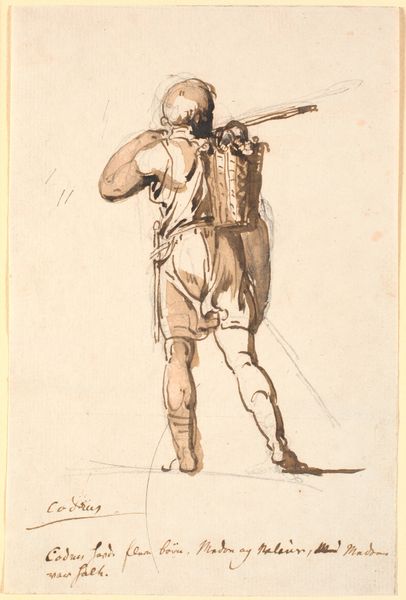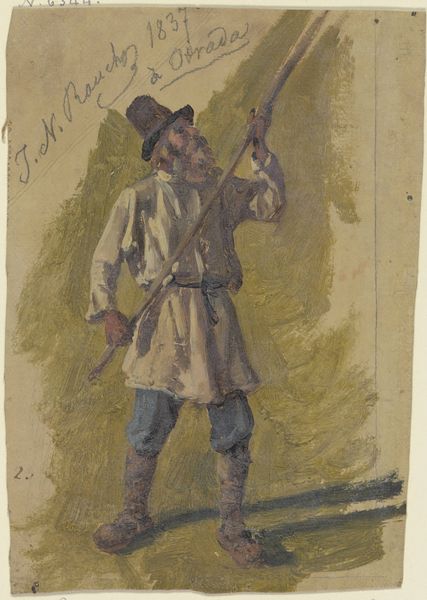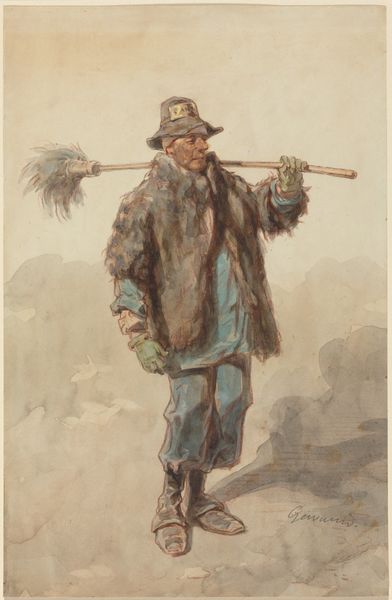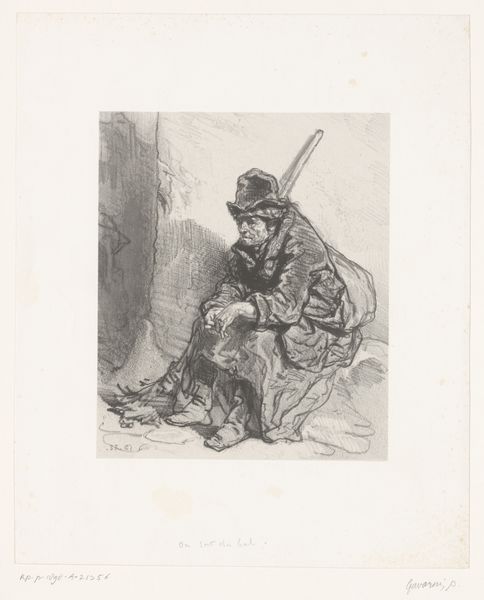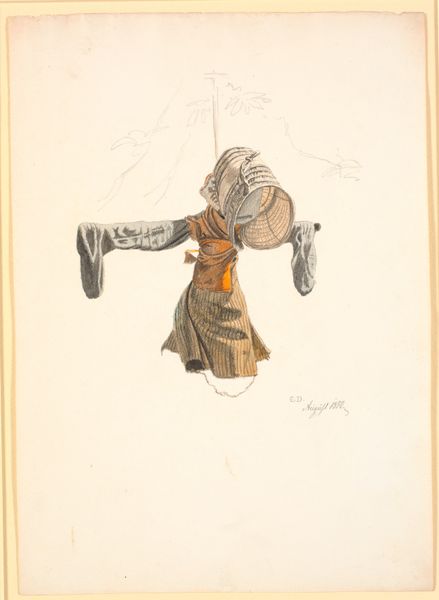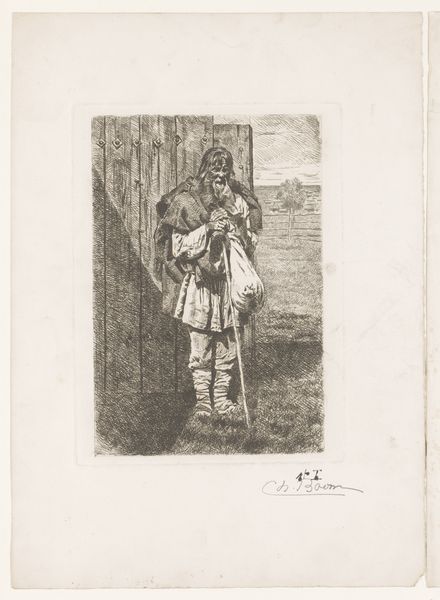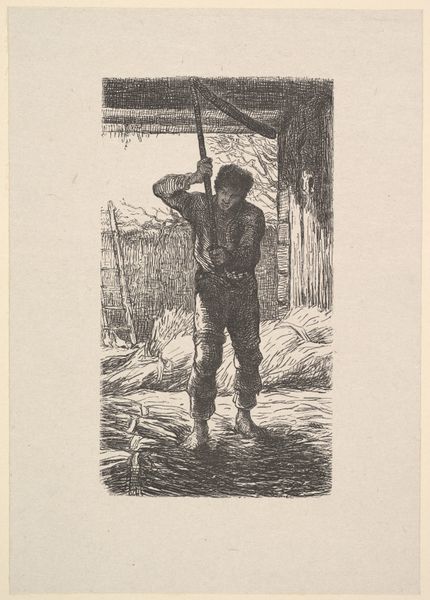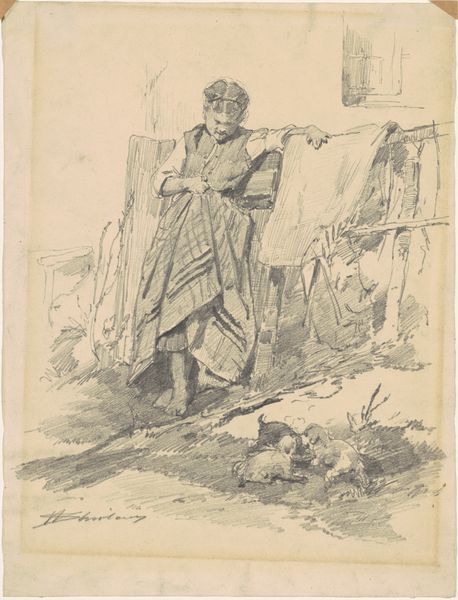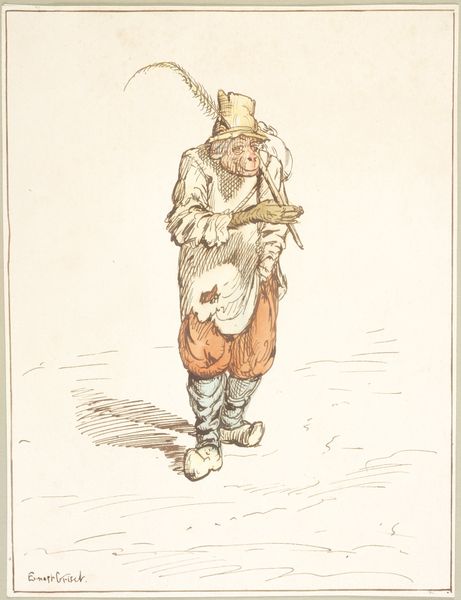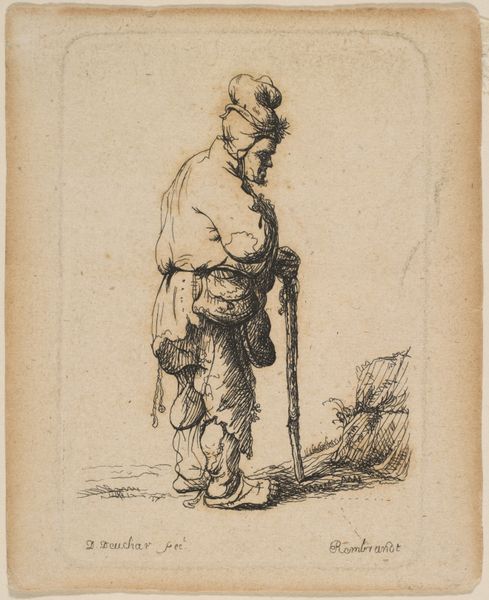
Dimensions: sheet: 53.3 × 3.3 cm (21 × 1 5/16 in.)
Copyright: National Gallery of Art: CC0 1.0
Curator: The subject of our attention today is Giuseppe Signorini's 1878 work, "A Moorish Soldier before a Sunlit Wall," likely executed in watercolor and oil. The blend creates such intriguing textures, what's your immediate take on it? Editor: My first impression is one of quiet confidence tinged with a hint of melancholy. The Moorish soldier's stance—poised yet relaxed against that luminous wall—speaks of someone guarding a place, or perhaps memories. Curator: Precisely. The composition echoes Orientalist themes popular at the time, yet Signorini adds a depth that moves beyond mere exoticism. Observe the choice of weapons—the dagger, the firearm. These aren't simply props; they communicate power and, maybe, anxiety about maintaining that power. Editor: I agree. And look at how the light falls. The wall behind him seems to glow, almost like a halo, yet his face is partially shadowed. Is Signorini suggesting an internal conflict, a wrestling with identity or duty in a changing world? It plays into the power dynamic. Curator: A fascinating suggestion. Culturally, this piece arrives at a moment of intense European engagement and colonization in North Africa. Signorini, through this lone soldier, might be questioning the romanticized narratives and delving into the human cost. Notice the meticulous rendering of the clothing versus the loose brushwork of the wall; such a juxtaposition gives a feeling of timelessness, of both belonging and transience. Editor: Absolutely. That bright wall serves as both backdrop and almost as another character, emphasizing the sense of isolation. I also appreciate how Signorini doesn't present a purely heroic figure. The slightly downcast eyes and relaxed hand hint at a weariness, adding an accessible human dimension to the portrait. This work, it seems, gives us access to collective memory, it triggers ideas beyond a first, quick appraisal. Curator: A truly nuanced approach. It reminds us how symbols, in the right hands, transcend their immediate context to touch on broader themes of identity, conflict, and the lingering echoes of cultural encounters. Thank you. Editor: An enlightening look into history, filtered through the artist's perspective and into the public sphere. Thank you, as well.
Comments
No comments
Be the first to comment and join the conversation on the ultimate creative platform.
